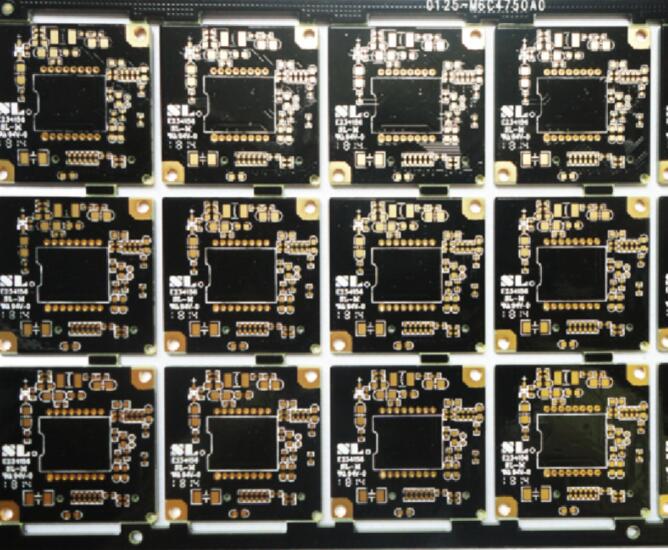Rf interface for rf circuit simulation
In concept, wireless transmitter and receiver can be divided into fundamental frequency and radio frequency. The fundamental frequency includes the frequency range of the transmitter's input signal and the receiver's output signal. The bandwidth of the fundamental frequency determines the basic rate at which data can flow through the system. The fundamental frequency is used to improve the reliability of the data stream and to reduce the load imposed by the transmitter on the transmission medium at a specific data transfer rate. Therefore, a lot of signal processing engineering knowledge is needed when PCB design fundamental frequency circuit. The rf circuit of the transmitter converts and elevates the processed baseband signal to a specified channel and injects the signal into the transmission medium. In contrast, the receiver's RF circuit can acquire the signal from the transmission medium and convert and reduce the frequency to the fundamental frequency.

Transmitters have two main PCB design goals: they must emit a specific amount of power with as little power consumption as possible. Second, they cannot interfere with the normal operation of transceivers in adjacent channels. As far as receivers are concerned, there are three main PCB design goals: first, they must accurately restore small signals; Second, they must be able to remove interference signals outside the desired channel; Like transmitters, they must consume very little power.
Rf circuit simulation of large interference signals
The receiver must be sensitive to small signals, even in the presence of large interfering signals (barriers). This occurs when an attempt is made to receive a weak or distant transmitting signal with a powerful transmitter nearby broadcasting on an adjacent channel. The interference signal may be 60~70 dB larger than the expected signal, and the normal signal can be blocked by a large amount of coverage in the input stage of the receiver, or by making the receiver produce too much noise in the input stage. Both of these problems can occur if the receiver is driven into a nonlinear region by an interference source during the input phase. To avoid these problems, the front end of the receiver must be very linear.
Therefore, linearity is also an important consideration when designing a PCB receiver. Because the receiver is a narrow-frequency circuit, the nonlinearity is measured by measuring "intermodulation distortion". This involves driving an input signal with two sine or cosine waves of similar frequency, located in the central frequency band, and then measuring the product of their intermodulation. SPICE was generally a time-consuming and costly simulation because it had to perform many loops to get the frequency resolution needed to understand the distortion.
Small expected signals for rf circuit simulation
The receiver must be sensitive to detect small input signals. In general, the input power of the receiver can be as small as 1 μV. The sensitivity of a receiver is limited by the noise produced by its input circuit. Therefore, noise is an important consideration when designing a PCB receiver. Moreover, the ability to predict noise with simulation tools is essential. Figure 1 shows a typical superheterodyne receiver. The received signal is filtered and the input signal is amplified by a low noise amplifier (LNA).The signal is then mixed with a local oscillator (LO) to convert it to an intermediate frequency (IF). The noise efficiency of front-end circuit mainly depends on LNA, Mixer and LO. Although it is possible to find LNA noise using traditional SPICE noise analysis, it is useless for mixers and LO because the noise in these blocks is heavily affected by the large LO signal.
The small input signal requires the receiver to have very high amplification capability, usually with a gain of 120 dB. At such a high gain, any signal coupling from the output back to the input can cause problems. An important reason for using a superheterodyne receiver architecture is that it can distribute the gain over several frequencies to reduce the chance of coupling. This also makes the LO frequency different from that of the input signal, preventing large interfering signals from "contaminating" the small input signal.
For different reasons, the direct conversion or homodyne architecture can replace the superheterodyne architecture in some wireless communication systems. In this architecture, the RF input signal is converted directly to the fundamental frequency in a single step, so most of the gain is in the fundamental frequency and LO is the same as the input signal frequency. In this case, the effects of a few couplings must be understood and a detailed model of the "stray signal path", such as couplings through substrate, couplings between package pins and bondwire, and couplings through power lines, must be established.
Interference of adjacent channels in RF circuit simulation
Distortion also plays an important role in the emitter. The nonlinearity of the transmitter in the output circuit may cause the bandwidth of the transmitted signal to be spread across adjacent channels. This phenomenon is called spectral regrowth. The bandwidth of the signal is limited until it reaches the transmitter's power amplifier (PA). But "modulation distortion" in PA causes bandwidth to increase again. If the bandwidth increases too much, the transmitter will not meet the power requirements of its adjacent channels. When transmitting digital modulation signals, SPICE is practically impossible to predict the regrowth of the spectrum. Since about 1,000 symbol transmissions had to be simulated to obtain a representative spectrum, and high frequency carriers combined, transient analysis of SPICE would be impractical.